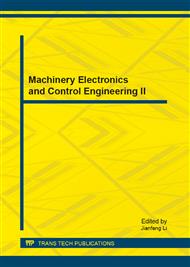p.148
p.157
p.164
p.169
p.174
p.179
p.184
p.188
p.193
Mechanical Properties and Morphology of Palm Slag, Calcium Carbonate and Dolomite Filler in Brake Pad Composites
Abstract:
The development of asbestos free brake pad composites using different fillers was investigated with a intention to substitute asbestos which is known hazardous and carcinogenic. Mechanical and morphology studies were made to clarify the mechanism for compressive strength, hardness and wear rate behavior of different filler of brake pad which were prepared by compression molding of mixture of filler (palm slag, calcium carbonate and dolomite) with phenolic as binder, metal fiber as reinforcement, graphite as lubricant and alumina as abrasive. The result showed that palm slag has significant potential to use as filler material in brake pad composite. The wear rate of palm slag composite was comparable with the conventional asbestos based brake pad. The result also supported by SEM micrograph.
Info:
Periodical:
Pages:
174-178
Citation:
Online since:
March 2013
Keywords:
Price:
Сopyright:
© 2013 Trans Tech Publications Ltd. All Rights Reserved
Share:
Citation:


